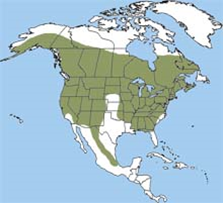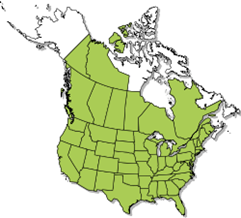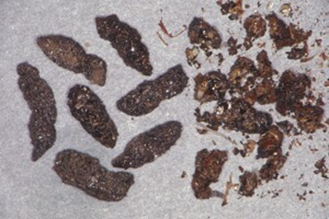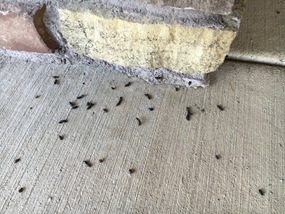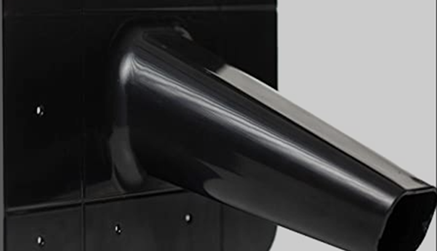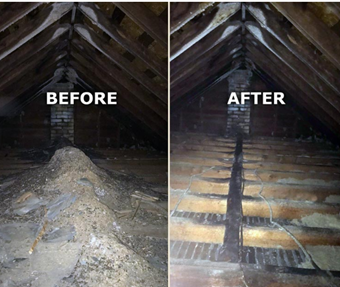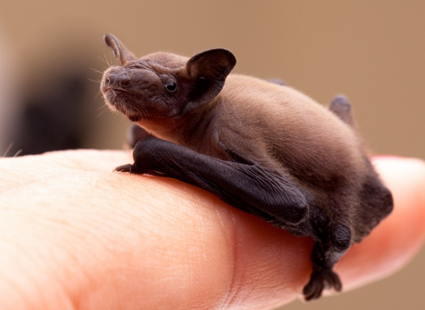Identification
- The most common species of bats in our service are the Little Brown Bat and the Big Brown Bat. The Evening Bat and the Mexican Free-tailed bat are also in some areas we service.
- Little Brown Bats are small. Their wingspan is 9 - 10 inches, with a body smaller than your hand. They live in large colonies of up to 300 in a house. They migrate, leaving in about October and coming back to the same house about May. They don’t go far when they migrate – usually, their winter hibernation sites are within a hundred miles or so of their summer roosts.

Little Brown Bat
- Big Brown Bats are the larger of the two species. Their wingspan is 13 - 14 inches, and the body is wider than your hand. They live in small colonies, usually only 5 or 6 in a house. They do not migrate to a warmer climate. They sometimes stay in the same house over the winter, moving down into the walls or under cover on the attic floor, where the temperature is above freezing. More frequently, though, big brown bats move out in the fall and seek a nearby cave, storm sewer, or other cool, humid winter hibernation site.
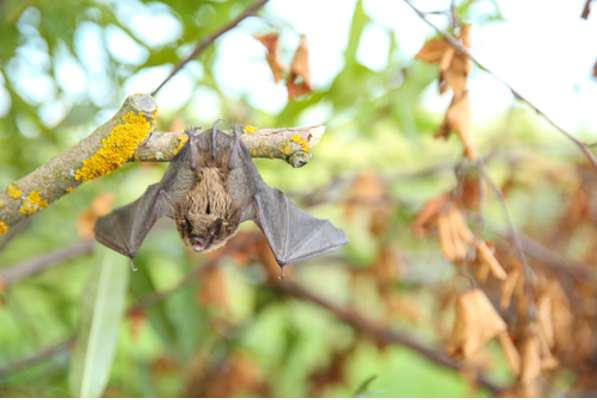
Big Brown Bat

Bat Species By State

